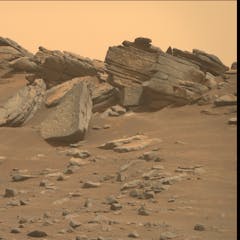
Articles on Space
Displaying 21 - 40 of 754 articles

Your phone can’t take a perfectly clear picture of a solar eclipse like a professional camera can, but there are lots of other creative directions you can take to capture the rare moment.

Some ancient texts record what were likely dying stars, faintly visible from Earth. If close enough, these events can disturb telescopes and even damage the ozone layer.

Europa Clipper will contain a plaque that celebrates humanity’s relationship with water and a decades-old tradition of searching for life outside Earth.

Powerful jets are launched from the most massive objects in our universe, but we don’t fully understand how. This measurement gets us a step closer to solving the mystery.

The solar corona can be seen during the solar eclipse on April 8. Astronomers are still trying to figure out the mysteries of the corona, including why it’s so hot.

The eclipse will allow scientists to get rare measurements of the Sun’s atmosphere.

Floating crystals can pause the stellar aging process, providing a final energy source to otherwise dead stars.

Eclipses have inspired myths, predictions and scientific discoveries. The total solar eclipse occurring on April 8 provides a once-in-a-lifetime opportunity to engage with science and the cosmos.

Many people will see a dazzling eclipse this April, but these events are possible only because of the sizes and precise distances between Earth, the Moon and the Sun.

Determining whether or not life exists on another planet is an extraordinarily complicated – and expensive – scientific endeavor.

Mentions of total solar eclipses in ancient history help researchers pinpoint precise dates of notable events.

When the Moon blocks the Sun during an eclipse, utility suppliers have to pull power from the grid to make up for gaps in solar energy.

If we need to use forensic techniques in space, we’ll need to understand how things behave differently in microgravity.

The next generation of spacesuit needs to do more than simply protect an astronaut from the vacuum of space.

The discovery raises big questions about widely accepted models of galaxy formation.

The mission provided details about how to deflect an asteroid should one threaten Earth in future.

We know particles from spacecrafts are in the stratosphere. But what this means for the ozone layer or the climate is still unknown.

The extreme object could tell us more about the environment around black holes.

Can astronauts spend prolonged time in close quarters millions of miles from Earth without killing each other?

The capability for attacking satellites in space using cyber technology is advancing fast





